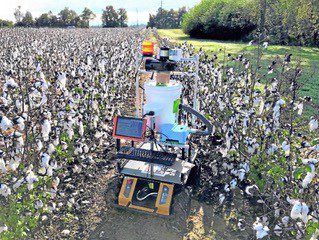The Bart Garrison Agricultural Museum of South Carolina has created a new exhibit that looks at changes in agriculture in South Carolina over the last 50 years, especially environmentally sustainable methods. “Growing Towards Our Future: An Exploration of the Cultural Landscape of Modern Agriculture” will include stories, images, and interactive components. The exhibit will open to the public on Saturday, January 28, 2023. SC Humanities supported this exhibit with a Major Grant.
The “Growing Towards Our Future” exhibit will feature profiles of South Carolina farmers, especially minority farmers, who have implemented innovative agricultural techniques, futuristic technologies, and agritourism. Agritech LLC in Allendale, SC will be featured for developing new technologies such as bio-crops.
Additionally, there will be three large, interactive exhibit components: a section on herbicides and pesticides that includes a drone, a section on aquaponics with an aquaponic demonstration tank, and a section on the history of tractors with a tractor simulator.
The Project Director Andrew Stevenson said, “We hope to combine these stories to create a narrative that both emboldens modern agriculturists to embrace sustainable agriculture and teaches the broader public about the shifts in agriculture in our state across the past fifty years.”
The Bart Garrison Agricultural Museum strives, rain or shine, to spark an interest in all things that grow. The museum is located at 120 History Lane, Pendleton SC 29670. Learn more.
The mission of SC Humanities is to enrich the cultural and intellectual lives of all South Carolinians. Established in 1973, this 501(c) 3 organization is governed by a volunteer 20-member Board of Directors comprised of community leaders from throughout the state. It presents and/or supports literary initiatives, lectures, exhibits, festivals, publications, oral history projects, videos and other humanities-based experiences that directly or indirectly reach more than 250,000 citizens annually.
Image: a prototype sensory robot developed by Clemson University
